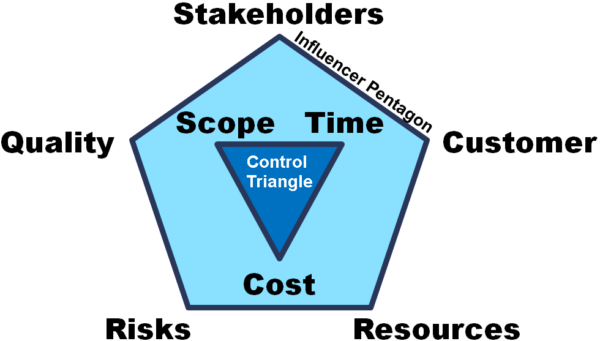Articles & Events, IT
Project Management Basics - Stakeholder Management

https://pmp-practitioners.com/project-management-basics/
It also introduces the importance of Stakeholder Management.

Stakeholder engagement and stakeholder management are arguably one of the most important ingredients for successful project delivery, and yet are often regarded as a fringe activity or one that can be outsourced to business-as-usual functions.
It is often said, ‘that 80% of Project Management is communication’. A study by PMI in 2015, showed that in organizations regarded as “effective communicators” 80% of projects met their goals - vs. only 52% in organizations regarded as being “minimally effective communicators”.
Project managers depend on people to respond to the outputs and benefits that they deliver. People will only respond when they are engaged. The phrase “stakeholder management” implies that these people can be made to respond positively to a project, but the truth is that a project manager frequently has no formal power of authority and therefore has to rely on active engagement to achieve their objectives.
If you want your project to succeed, it pays to remember an old saying, “No man is an island.” Why? Because almost every project you work on, large or small, simple or complex, needs input from other people. Chances are you’ll depend on some of them for support, investment and resources.
Stakeholder management is the process of engaging with these people (Stakeholders and the Customer), and maintaining good relationships with them. You’ll likely be working with people in many different roles, with varying levels of influence over your project.
Communicating with them in the right way can play a vital part in keeping them “on board.”

So who are the stakeholders?

10 key principles of stakeholder engagement
1. Communicate:
Before aiming to engage and influence stakeholders it’s crucial to seek to understand the people you will be working with and relying on their support throughout the phases of the project life-cycle, including your team and Customer.
Sharing information with stakeholders is important, but it is equally important to first gather information about your stakeholders.
Develop a Stakeholder Register:
https://pmp-practitioners.com/product/stakeholder-register-and-analysis/
then develop a Power and Influence grid:
 2.Consult, early and often:
2.Consult, early and often:
A project, particularly in the early stages, may be unclear to its stakeholders for example, in terms of purpose, scope, risks and approach. Early and regular consultation is required to ensure that their requirements are agreed and a delivery solution is negotiated that is acceptable to the majority of stakeholders.
Develop and agree a Project Charter:
https://pmp-practitioners.com/product/project-charter/
and capture their requirements in a requirements matrix:
https://pmp-practitioners.com/product/requirement-and-scope-management/
3. Remember, they’re only human:
Accept that humans do not always behave in a rational, reasonable, consistent or predictable way and often operate with an awareness of human feelings and potential personal agendas.
By understanding the cause of stakeholder behavior, you can assess if there is a better way to work together to maintain a productive relationship:
https://pmp-practitioners.com/product/stakeholder-register-and-analysis/</p
4. Plan it!
A conscientious and measured approach to stakeholder engagement is recommended and therefore encouraged. Investment in careful planning before engaging stakeholders will bring benefit:
https://pmp-practitioners.com/product/communication-management-plan/
5. Relationships are key:
Developing relationships is key and will result in increased trust. Where there is trust, people work together more easily and effectively.

Investing effort in identifying and building stakeholder relationships can increase confidence across the project environment, minimize uncertainty, and speed problem solving and decision-making.
6. Simple, but not easy:
Taking simple and timely actions with stakeholders can significantly improve project delivery. Although this principle is obvious, in practice it is still only rarely done well. Work with your stakeholders, understand their needs.
7. Just part of managing risk:
Stakeholders are influential resources and should be treated as potential sources of risk and opportunity within the project. If managed well stakeholders will help you manage risks and provide you with new opportunities.
8. Compromise:
Establish an acceptable baseline across a set of stakeholders’ diverging expectations and priorities. Assess the relative importance of all stakeholders to establish a weighted hierarchy against the project requirements and agree with the project Sponsor:
https://pmp-practitioners.com/product/stakeholder-register-and-analysis/
Consider developing a RACI with the Stakeholders to clarify responsibilities.
9, Understand what success is:
Project success means different things to different people and you need to establish what your stakeholder community perceives success to be for them in the context of project delivery’
So what is important to them?
10. Take responsibility:
Stakeholder engagement is not the job of one member of the project team, it cannot just be given to a Communications Manager, and it’s the responsibility of everyone in the team (including your stakeholders) to understand their role and to follow the right approach to communication and engagement.
Good project governance provides clarity about stakeholder engagement roles and responsibilities and what is expected of people involved in the project.
Celebrate your Success

‘WE DELIVER’

